Keyboard Bacterial Culture
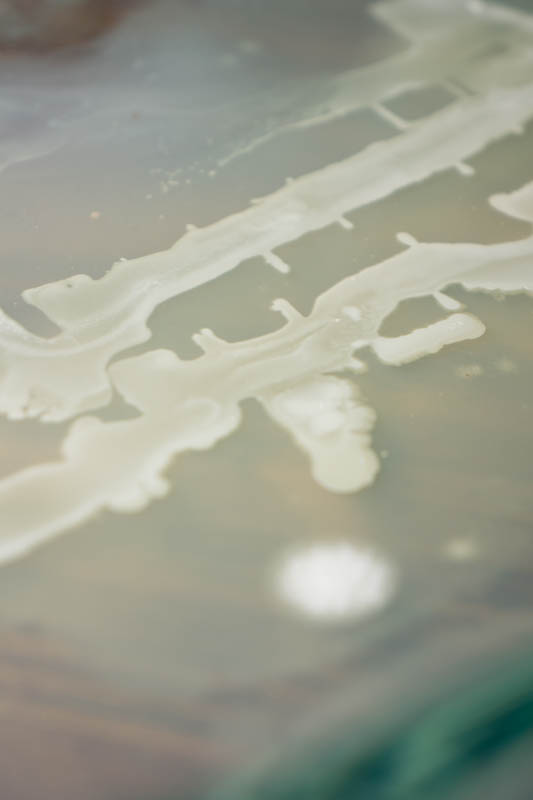
Keyboards are gross. How can they not be? Most of us spend hours every day on them, transferring all sorts of good stuff back and forth from our hands to the keys. So, while looking closely at my keyboard recently, I got to wondering just what types of bacteria and other microorganisms were growing on it. Thus began an experiment to find out.
Computer, Meat Science
I use a (decidedly not magic) Apple wireless keyboard at home, which, lacking a keypad and control keys, has around eighty keys. I’ve used the same keyboard for the past five years and clean it thoroughly perhaps once or twice a year. But it hadn’t been cleaned in at least six months, providing good starting conditions for my little experiment.
My initial thought was to sample each key on the keyboard and grow the samples in separate petri dishes, perhaps even having a lab identify the type of bacteria produced (I really wanted to make a keyboard with the keys colored according to the bacteria found on that key: green for E.coli, yellow for strep, red for plague, …) Such grand ambition however turned out to be more than a little impractical for a silly project like this. Preparing eighty sterile petri dishes, collecting samples without cross-contamination, and growing all these cultures would have been a major undertaking. Furthermore, it’s not like you can just take a petri dish down to your local drug store to get the bacteria identified for a few dollars. Processing all these samples would have cost thousands and thousands of dollars.

So, why not then go with the simplest approach possible: press the entire keyboard against a giant agar plate and see what happens? Apple’s chiclet keyboards are particularly well suited to this, because the keys are flat and the key surface is even across the entire keyboard. There was only one small problem, no one sells prepared bacteria culture plates that are keyboard sized. A missed market opportunity if you ask me.
Materials
Most online instructions on preparing bacterial growth media mention Erlenmeyer flasks, autoclaves, lab benches, petri dishes, etc. Now, I had access to precisely none of those items, but here’s what I did have:
- One 9x13 Pyrex baking dish with plastic cover.
- One 300ml bottle of premixed nutrient agar.
- Sterile latex gloves and sterile face masks.
- A roll of clear packing tape.
- Garbage bags.
- A microwave.
- An oven.
I chose nutrient agar as a growth medium since it is supposedly easy to prepare, and it supports a range of bacteria, but nothing too toxic. Many websites also mentioned nutrient agar as well suited to middle school science fair projects, so it sounded to be just about at my level.
Procedure
Contamination was my main concern during preparation, and working out of an apartment with a bunch of scrounged together supplies didn’t exactly help this matter. In place of an autoclave, I sterilized the 9x13 dish by heating it at 400 degrees in the oven for thirty minutes, and microwaved the plastic cover for about ten minutes in hopes that that would do something. After heating the nutrient agar in the microwave to liquify it, I poured it into the baking dish, giving about 1/8th of an inch of agar over the bottom (although somewhat less in the center section). I made the lid “airtight” with some packing tape and left the plate to cool to room temperature.
Once the agar solidified, I carefully removed the cover and gently pressed my Apple keyboard down in the middle of the dish. I left it there for about a minute and applied gentle pressure over the back of the keyboard to make sure every key came in contact with the growth medium. Then I lifted the keyboard out, sealed the dish back up with lots of tape, and turned the entire dish upside down so that condensation would collect on the lid and not on the agar. This whole mess went into a garbage bag placed over by the heater. The keyboard was back in use not five minutes later.
I’m almost certain that there was some contamination, but hopefully it did not effect things too much. The growth environment was also less than ideal, with temperatures more around 70 degrees F than body temperature.
For such a hacked together setup though, and having zero clue what I was doing, the results came out better than I expected.
The Horror! The Horror!
Perhaps somewhat naïvely, I was hoping that my keyboard would give birth to a beautiful piece of abstract art, somewhat like this lovely culture:
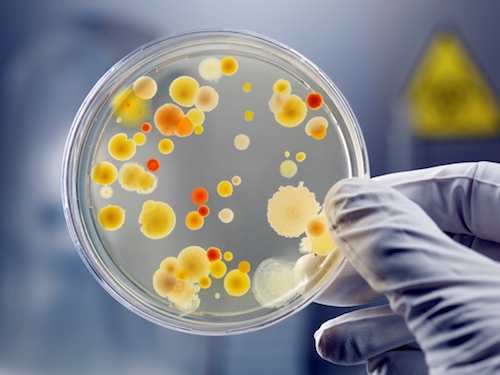
But, after a week, my culture looked less Matisse and more mucus:
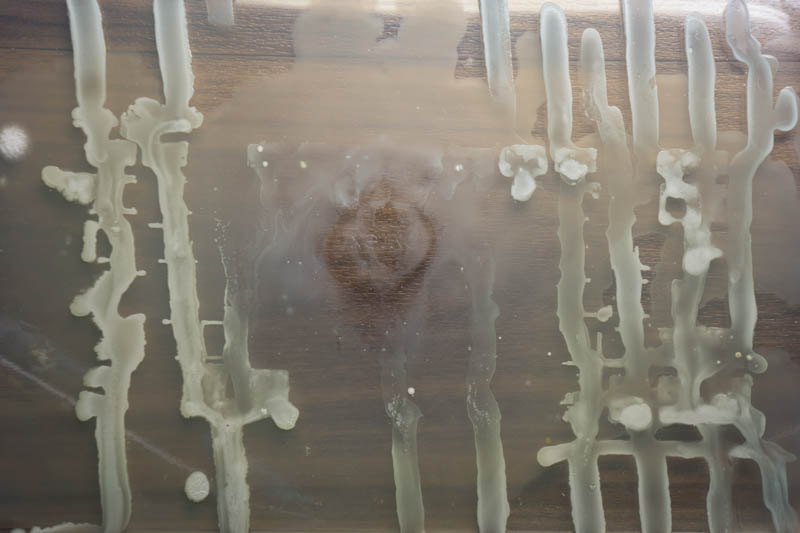
Interesting though. A number of keys are clearly defined, especially the areas where my left and right hands normally rest. Here’s the keyboard overlaid on the image to show which keys are which.
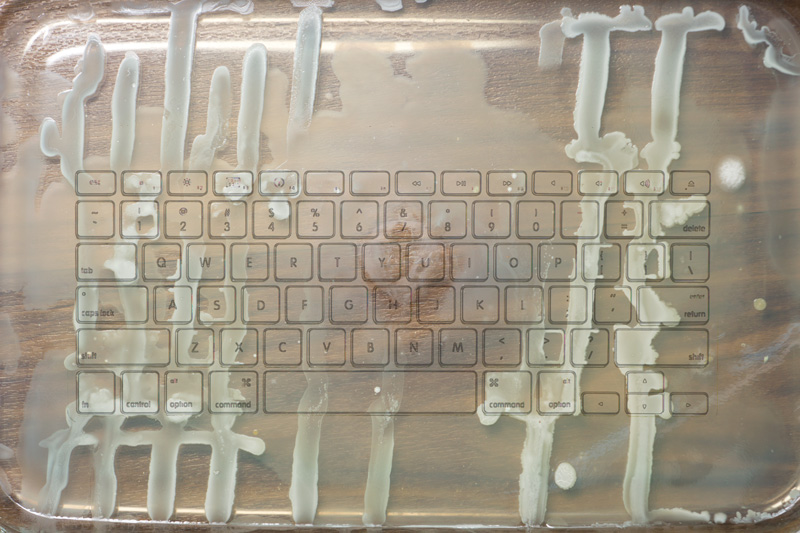
I have no clue what caused the streaks leading to the edge of the dish. It is also interesting that the most heavily used keys have less growth than keys I use less often, such as: F3, F11 and F12, right command and options keys (as an avid Spelunky player, if key use alone were the determining factor, I would expect the arrow keys, together with the left shift, Z, and X keys to host nothing less than the Andromeda strain.)
The center section may be more barren because the agar was not thick enough there.
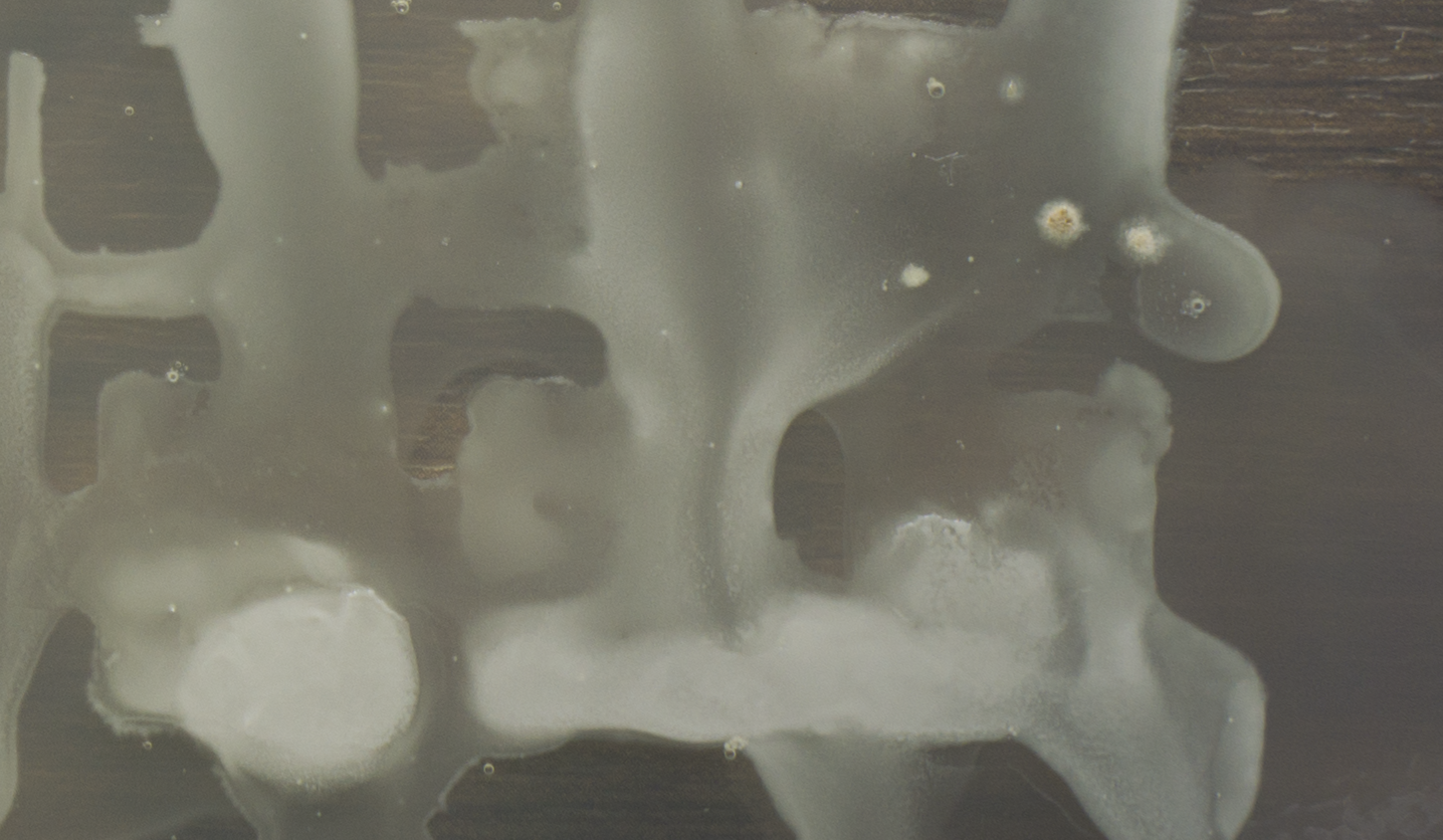
The growth all superficially looks very similar. Closer inspection shows a few colonies and interesting patterns, but I’m not sure if these were caused by contamination or were from the keyboard itself.
Conclusion
Although the experiment didn’t quite turn out as photogenic as I expected, the results are interesting. It would be cool to repeat this using proper equipment and perhaps a different growth media, and see if more interesting growths can be coaxed out.
I have one bottle of agar left so I may also try another device (tablet or phone) to see what that produces.
